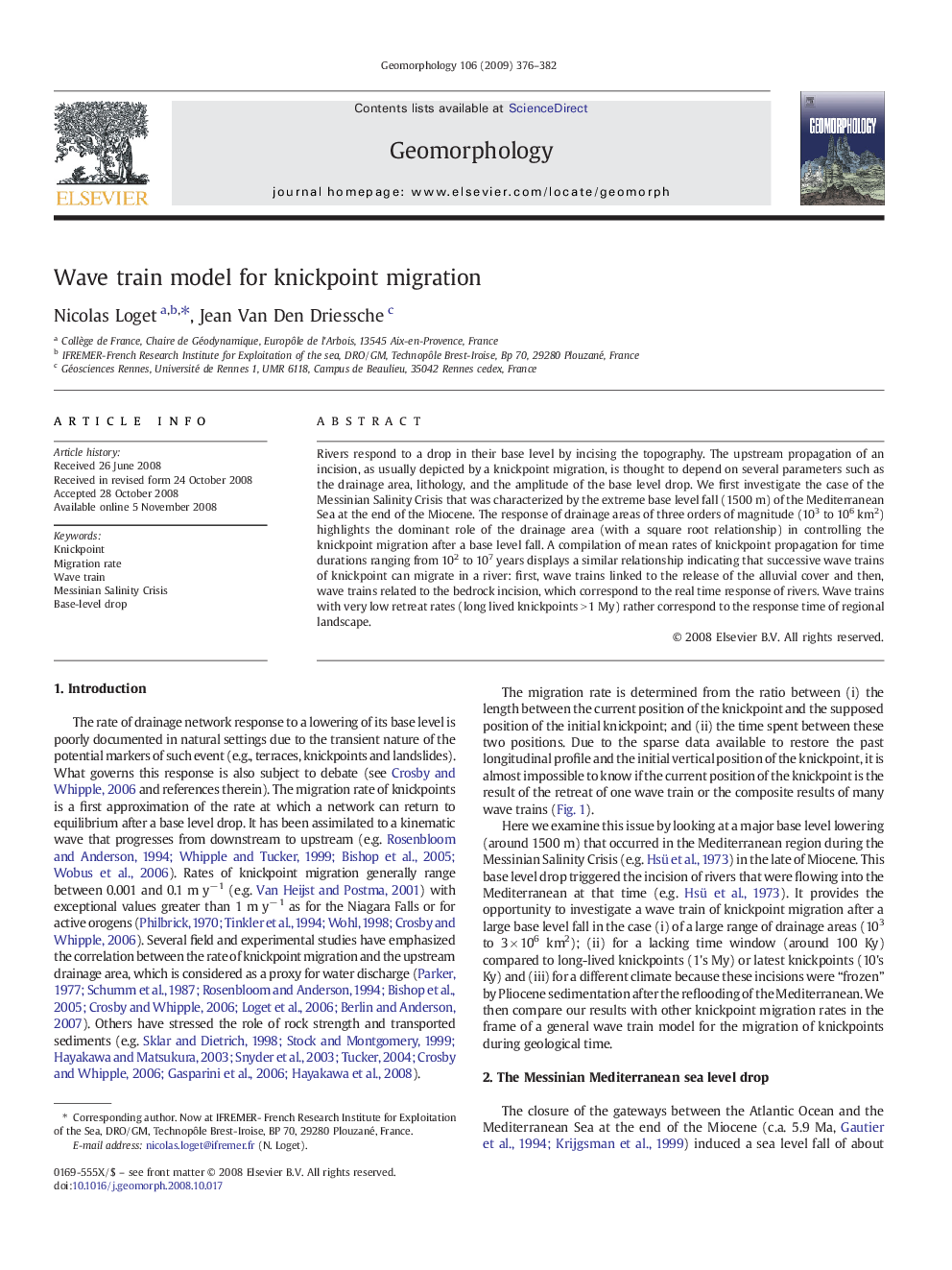| کد مقاله | کد نشریه | سال انتشار | مقاله انگلیسی | نسخه تمام متن |
|---|---|---|---|---|
| 4686337 | 1635545 | 2009 | 7 صفحه PDF | دانلود رایگان |

Rivers respond to a drop in their base level by incising the topography. The upstream propagation of an incision, as usually depicted by a knickpoint migration, is thought to depend on several parameters such as the drainage area, lithology, and the amplitude of the base level drop. We first investigate the case of the Messinian Salinity Crisis that was characterized by the extreme base level fall (1500 m) of the Mediterranean Sea at the end of the Miocene. The response of drainage areas of three orders of magnitude (103 to 106 km2) highlights the dominant role of the drainage area (with a square root relationship) in controlling the knickpoint migration after a base level fall. A compilation of mean rates of knickpoint propagation for time durations ranging from 102 to 107 years displays a similar relationship indicating that successive wave trains of knickpoint can migrate in a river: first, wave trains linked to the release of the alluvial cover and then, wave trains related to the bedrock incision, which correspond to the real time response of rivers. Wave trains with very low retreat rates (long lived knickpoints > 1 My) rather correspond to the response time of regional landscape.
Journal: Geomorphology - Volume 106, Issues 3–4, 15 May 2009, Pages 376–382